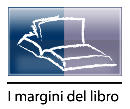 |
16, 2022 | |||
| Abstracts | versione italiana | |
| Saggio |
Marta Baiardi
Le pietre del dolore. Memoria epigrafico-monumentale della Shoah a Firenze (2012-2021)
After the massacre of the World War II, the radical nature of the anti-Jewish genocide perpetrated by the Nazis and their allies was addressed and processed weakly by the Western world. The Italian postwar period was no exception: the dehumanizing experience reported by the copious memorial production of the few survivors found an inattentive audience and almost no space in the public discourse. The memory of the Holocaust was therefore cultivated almost exclusively within Jewish parental and community circles. However, this trend changed significantly with the trial of the Nazi criminal Adolf Eichmann (Jerusalem, 1961), who brought the anti-Jewish extermination to the attention not only of scholars and intellectuals, but of the whole world. Since then, the rise of the Shoah in the public discourse has been constant and impetuous, corroborated by memorial policies with a planetary impact and not without ambiguity. This essay focuses on the steps of this process, connecting it to the development in the Florentine territory of a specific lapidary corpus on the Shoah. The epigraphs and monuments placed in recent years are examined − by studying their genesis, meaning and value of use − not in the spaces of the local Jewish community, but in the very heart of the Florentine urban landscape, which they deeply impacted.
versione italiana |
| Saggio |
Nicola Ribatti
Il bisturi, lo stilo e il pennello.
Qualche riflessione su letteratura e arti figurative in 'Anastom˛si' di Carlo Emilio Gadda
The article analyses a short but dense text, Anastom˛si, published by Carlo Emilio Gadda in 1943 and re-edited, with few variations, in 1961. The first part identifies the numerous isotopies underlying the text, among which the anatomical and the pictorial emerge in particular. The second part attempts to analyse some interdiscursive analogies between the Gadda's text and Rembrandt's The Anatomy Lesson of Dr. Tulp. The aim of the contribution is to highlight the intertwining of literary and visual references that characterises Gadda's prose.
| versione italiana |
